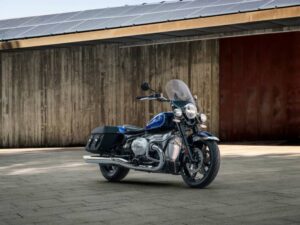The Longest Vehicle Ever Was A Trackless, Overland Train Meant To Run On Nuclear Power

It’s a bit of a mystery why we haven’t done a deep dive on the LeTourneau TC-497. After all, no five words in the English language can get a heart beating quiet like Nuclear-Powered, Trackless, Overland Train.
Rivian R1S Design Analysis
But surely all trains go overland, I hear you saying. Well you’re wrong. These are an entirely different breed of tires-to-the-dirt trains. It was meant to serve as a supply chain solution for the U.S. Army in hard to reach places without railways or roads.
Today, only the lead control car remains of the 600-foot long semi parked at the United States Army’s Yuma Proving Ground in Yuma, Arizona. One of my favorite YouTube channels devoted to big machines, Calum, checked it out in real life and damn, is it cool.
Inside The Insane 1960s Nuclear Overland Vehicle – LeTourneau TC-497
This isn’t even Calum’s first trackless train video! He’s got an even more detailed retelling of these behemoths here:
The World’s Largest Overland Vehicles – LeTourneau’s Land Trains
The car itself is 46 feet long and towers over single-floor buildings. Each one of its six, over 1o-foot-tall Firestone tires weighs one ton. Inside each of those wheels was also an electric motor and all six worked in tandem to propel the train, much like electric cars today. In fact, the mechanical drive connection meant all 34 of the TC-497’s wheels could be powered and the TC-497 even employed regenerative braking.
Powered by four Saturn 10MC engines weighing more than 1,150 pounds producing 1,170 horsepower each paired with AC and DC generators making the TC-497 much more train-like than say, just a really big semi truck. One engine would be in the control car, while the other three would be placed along the length of the train to assist in powering the attached cars. These powerful engines sucked up fuel at a clip of 30 to 60 gallons per minute while off-road, according to Overland Trains. That’s a lot of go-juice, so the U.S. government as early as 1955 began toying with the idea of a nuclear powered engine for the overland trains. The inventor of the TC-497 RG Letourneau, specifically stated the gas turbine engines were only a stop-gap measure until the proper atomic power source could be produced.
Inside the LeTourneau has more of the feel of a submarine than a semi — a full kitchenette, a bathroom and six bunks meant this massive vehicle could harbor a crew of six on long haul journey across the bleakest terrain in snow or deserts.
Following over 500 hours of testing over a few years in the Arizona desert, the entire project was scrapped. Cargo helicopters just proved a much more efficient form of transportation to get supplies to remote areas.
Check out Calum and his other excellent videos here.





